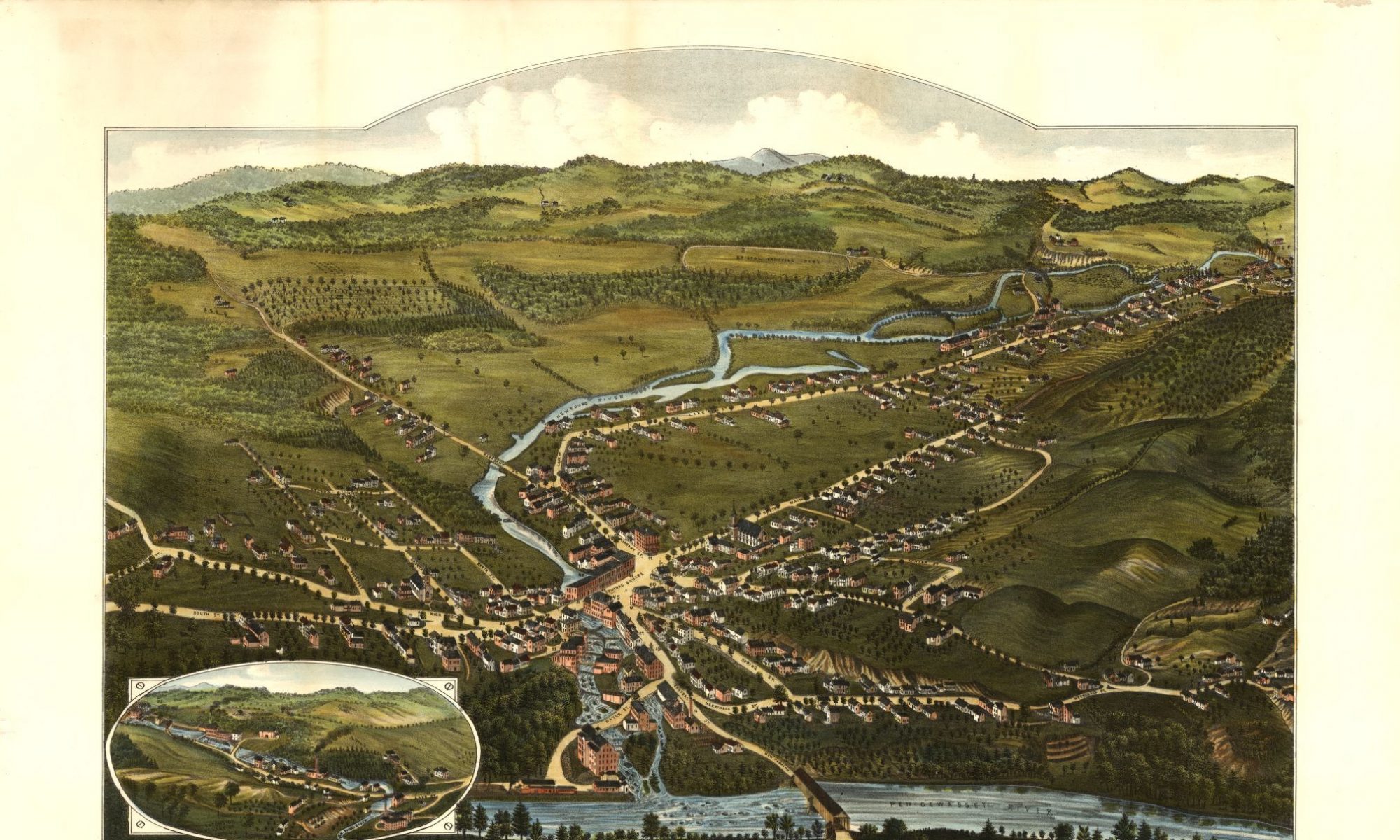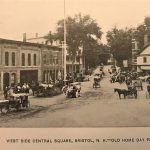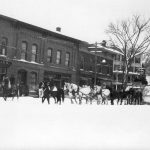
The iconic Rollins Block has been a fixture of the central square of Bristol for well over a century. Richard W. Musgrove wrote in his history of the town, “a small, one-story building stood where is now the Rollins Block”. The first mention of a store going into the building was a hatter’s shop, where various hats were made, operated by Reuben Hosmer in 1830. Some time would pass before the next occupant, Ebenezer Eaton opened a trade store in 1843. Eaton then moved this building to Summer Street and put in a larger one where the Rollins Block currently stands.
Orren B. Davis moved into the new building built by Ebenezer ,where Davis ran a country store from 1847 to 1852, when Orren closed up shop and moved to Franklin. Two more proprietors, James T. Sanborn, and Joseph F. Rollins, traded there from 1855 to July 4th, 1861, when a fire destroyed the building. The circumstances surrounding this fire are peculiar, as it was caused by a gang of rowdy teenage boys burning an effigy of Jefferson Davis. The fire got out of control and spread to a few buildings in the central square. The now-vacant lot did not remain that way for long, as it was rebuilt by Joseph F. Rollins, who operated there until 1864, when ownership changed hands once more.
In 1867, a new proprietor took over and operated under the firm name of Farrar & Boardman. Four years later another fire burned down the building, a little over a decade after the first. The building that can be seen nowadays is the same one that was rebuilt after the second fire. The block was rebuilt by Leston R. Rollins, and Oscar L. Rand became the first new proprietor after the fire. Various shop owners would come and go in the following decades up to the present day.
The Rollins Block stands out from the surrounding architecture distinguished by big white letters running across the face of the building above the shops below. The building itself is classified as Victorian Commercial according to the Historic Resource Inventory entry. The building does share some commonalities with the Renaissance Revival style that was popular in America from 1840 to 1890. Some features that one can see on the facade include a smooth ashlar finish, premeditated window heads, cornice window heads, architrave window frames, and an architrave cornice hanging over the front of the building.


